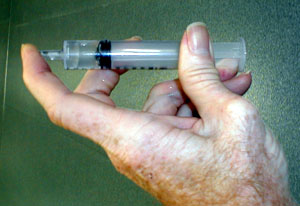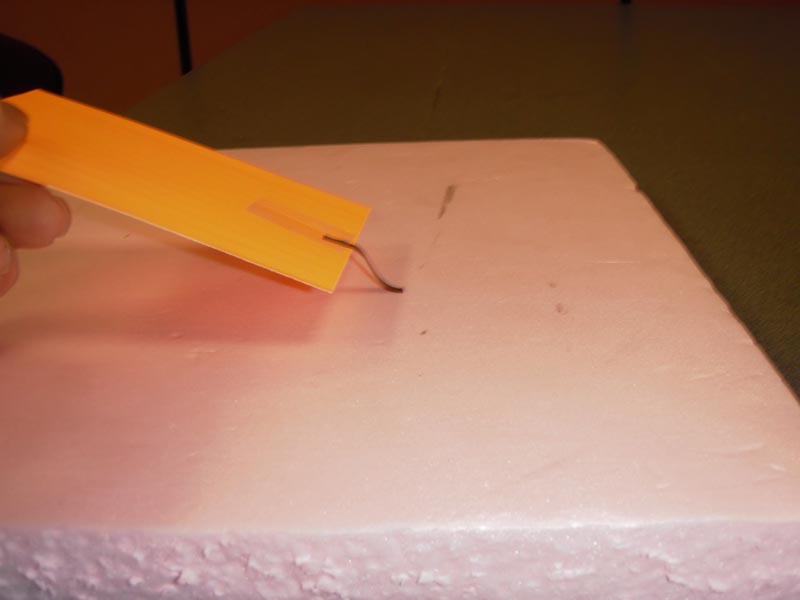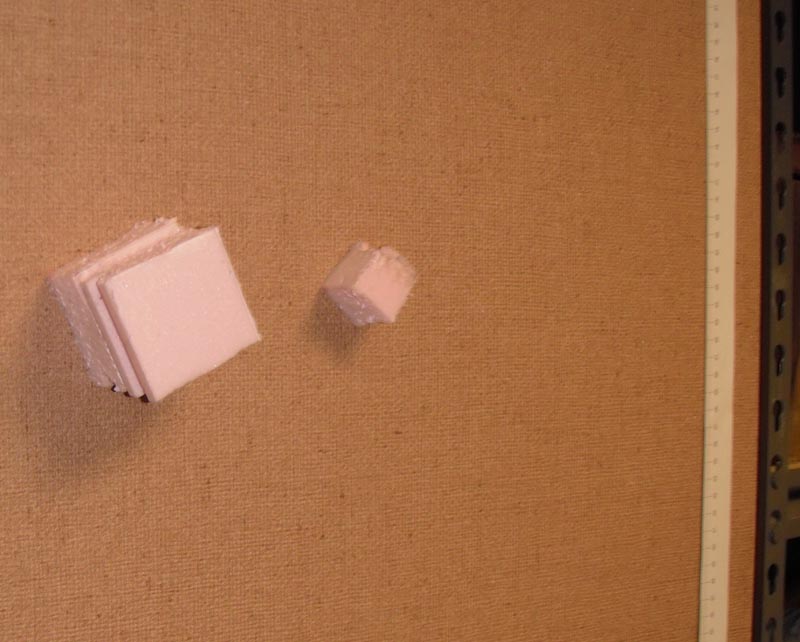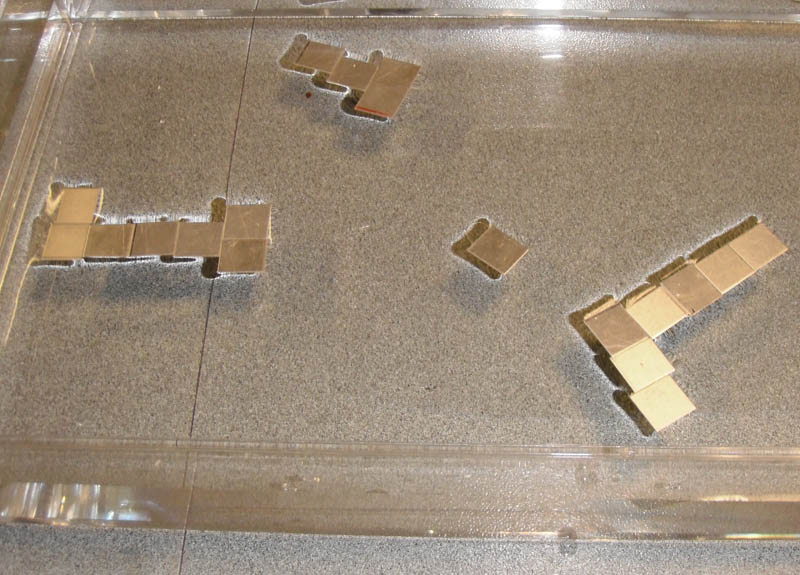MRS workshop 2011
Developing Material Science Activities for Everyone
Introduction
The Exploratorium creates exhibits and activities using a process known as "working prototypes". Developers get their hands on the stuff they think might be useful to create an activity as soon as possible. They create prototype activities with the stuff and share it with their colleagues, the public, and the evaluators as soon as possible. The activity is then refined by using it over and over again with different audiences and an open ear for feedback. Visitors create amazing new ways to use exhibits!

Boyling Water Boil water at room temperature by reducing the pressure on the water. This is done by using a syringe.

Scanning Probe Macroscope A piece of magnetic recording tape has just the right stiffness to act as a cantilever in a large model of a scanning probe microscope which can be used to detect the distribution of electric charge on a surface.

Surface Area - Volume Styrofoam cubes with different side lengths can be charged on one face and stuck to a wall. Whether they stick depends on the surface area to volume ratio.
Electrostatic Styrofoam, An improved version of the working prototype

Self Assembly Aluminum coins and squares will "float" on the surface of water with the help of surface tension. These coins "attract" each other and assemble into crystalline arrays.
Cu at the Bottom, "Float" bare copper wire on water with the aid of surface tension.
Magnets Round the Rim Use toroidal refrigerator magnets to explore escape velocity and make a model of electrical conduction.
Silent Collisions Two toroidal magnets can be collided elastically and inelastically on a pencil with steel eraser band.
Atmosphere Model A stack of 5 toroidal magnets on a pencil models the atmosphere of the earth.
Bohr Model of the Atom, Use a gravity well to create Bohr's electron waves to generate the energy levels of hydrogen.